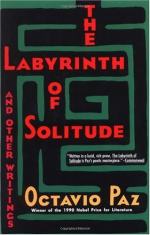
|
| Name: _________________________ | Period: ___________________ |
This test consists of 15 multiple choice questions and 5 short answer questions.
Multiple Choice Questions
1. According to Trotsky, what should happen if the Revolution does not break out in advanced nations following World War II?
(a) The Marxist view of history should be revised.
(b) The Marxist view of economics should be revised.
(c) Socialism should be forced on those nations.
(d) Socialism should be abandoned altogether.
2. What was the most radical period of the Revolution?
(a) The three months leading up to the revolt.
(b) The Calles Coup.
(c) The Cardenas Administration.
(d) The Obregon Administration.
3. Which of the following created the Spanish monarchy?
(a) Diversity.
(b) Political will.
(c) Unity.
(d) Violence.
4. What important circumstance did early revolutionary governments not take into account?
(a) Desertion of rural areas.
(b) Natural resources.
(c) Population growth.
(d) Expansion of cities.
5. How does the Indian perceive salvation? (Chapter Five).
(a) As part of society and the cosmos, as well as individual.
(b) As something attainable only by a few people.
(c) As something solely individual.
(d) As something open to anyone who would believe.
6. Where have the great revolutions of the 20th Century occurred?
(a) In backward countries.
(b) In places with little modern culture.
(c) In large, wealthy countries.
(d) Among indigenous tribes.
7. What does Paz mean by the word, "community"?
(a) A gathering of people who are invested in each other.
(b) A place of stable government and economy.
(c) A place of safety, especially for women and children.
(d) A place of liberty where men recognize themselves in each other.
8. Why was unemployment high in Mexico at the time that Paz was writing?
(a) The two biggest factories were experiencing lay-offs.
(b) The population grew more quickly than industry.
(c) The labor unions made it difficult for workers to get jobs.
(d) The economy was going through a recession.
9. How did the Independence movement begin in South America?
(a) With a small band of determined revolutionaries.
(b) With simultaneous victories sweeping the continent.
(c) With Mexican housewives gradually overturning the governing body.
(d) Under the leadership of impassioned leader, San Martin.
10. When did the Plan of Ayala go into effect?
(a) March, 1951.
(b) January, 1909.
(c) November, 1911.
(d) July, 1937.
11. Why did the Church support Spanish power?
(a) The Church was bribed by the Spanish monarch.
(b) The Church owed its Mexican existence to the Spanish Conquest.
(c) The Church was threatened by Spain.
(d) The Church owned large portions of land.
12. In Paz's estimation, why do the common people follow their revolutionary leaders?
(a) They believe in the revolution, regardless of who leads it.
(b) They are intimidated by the leaders.
(c) They identify with the men.
(d) They have no desire to upset the progress of the Revolution.
13. According to Paz, what is the "contemporary crisis"? (Chapter Seven, page 172).
(a) The difficulty of Mexico relating to the advancing western world.
(b) The struggle between two diverse cultures.
(c) The crisis of self-identity sweeping South America.
(d) A struggle within a culture that no longer has any rivals.
14. What horror did Cortez's rule not commit?
(a) Forcing indigenous people to speak European Spanish.
(b) Complete annihilation of the native peoples.
(c) Raping the indigenous women.
(d) Denying the conquered people a place in society.
15. What was one factor that guided the Revolution to prioritize tradition?
(a) The large number of supporters over the age of 50.
(b) The workers did not belong to the city or the country, and so they did not have any tradition.
(c) Its fear of the future.
(d) Its belief in the value of the past.
Short Answer Questions
1. What did Manuel Gomez-Morin accomplish for the Revolution?
2. What happened to the people annexed by greater world powers?
3. In Paz's philosophy, why must Mexicans face reality alone?
4. Following the Revolution, why was socialist education not widely implemented in Mexico?
5. What event precipitated Spain's complete loss of power?
|
This section contains 715 words (approx. 3 pages at 300 words per page) |

|




